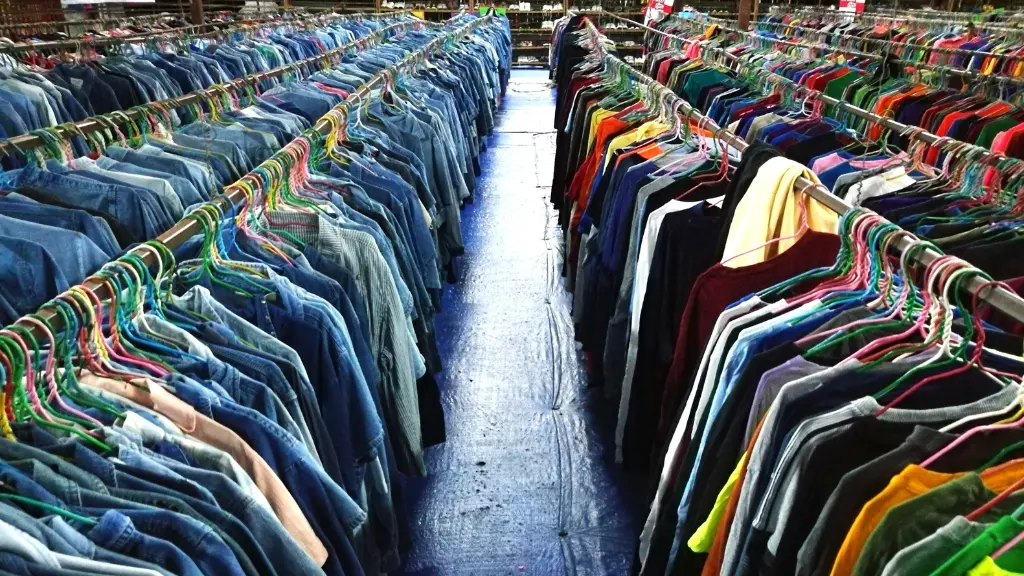In today’s increasingly eco-conscious society, selling secondhand clothing has become more than just a way to declutter your wardrobe—it’s a part of a larger movement toward sustainability and mindful consumption. As consumers become more aware of the environmental impact of fast fashion, the demand for secondhand clothing continues to grow.
Whether you want to make some extra cash or embrace a more sustainable lifestyle, selling your gently used clothes can be both profitable and rewarding. But with so many platforms and methods available, knowing where to start can be overwhelming.
This comprehensive guide will walk you through the best places to sell your secondhand clothing in the USA, along with tips to maximize your profits and minimize hassle. Whether you’re looking for online platforms, local shops, or specialized marketplaces, there’s an option for every seller and type of clothing.
You May Also Like: Redefining Female Strength: Beyond the Stereotypes
1. Online Marketplaces: The Modern Approach
In the digital age, online platforms have revolutionized the way we buy and sell clothing. These websites and apps allow sellers to reach a wider audience, making them some of the most popular options for selling secondhand clothing. Here are some of the top online marketplaces:
a) Poshmark
Poshmark has become one of the go-to platforms for selling secondhand clothing in the USA. It’s user-friendly and allows sellers to list items quickly with just a few photos and a brief description. Poshmark specializes in fashion, making it an ideal platform for selling trendy, name-brand, and designer clothes, shoes, and accessories. The platform charges a flat fee of $2.95 for items under $15, and for sales over $15, Poshmark takes a 20% commission. However, the exposure you get from the platform’s active community makes it worth considering, especially for high-quality items.
Tip: Poshmark emphasizes social engagement, so follow other sellers, share listings, and participate in Posh Parties (virtual shopping events) to boost your visibility and increase sales.
b) Depop
Depop is a popular choice among younger sellers and buyers, especially those interested in vintage, streetwear, and unique or niche fashion items. Known for its Instagram-like interface, Depop allows you to connect with a fashion-forward community that appreciates individual style. The platform charges a 10% commission on all sales, and sellers are responsible for shipping costs. Depop is ideal for sellers with an eye for aesthetics and creativity, as the visual appeal of your listings plays a big role in attracting buyers.
Tip: Pay attention to styling and photography on Depop. Curating your profile with a cohesive look and feel can help you stand out.
c) eBay
eBay is one of the most versatile platforms for selling secondhand clothing. You can sell everything from vintage pieces to luxury brands and everyday apparel. While eBay doesn’t focus exclusively on fashion, it has a large audience, and you can choose between auction-style listings or fixed-price formats. eBay charges a 10-15% fee depending on the category, plus a small fee for listing upgrades like bold text or premium placements.
Tip: Be detailed with your descriptions and include accurate measurements and brand information. Buyers on eBay often search for specific items, so including relevant keywords can increase your chances of making a sale.
d) ThredUp
ThredUp is a convenient option if you want to sell without doing much work. The platform focuses on high-quality, like-new clothing, and offers sellers the option to mail in their clothes via a “Clean Out Kit.” ThredUp inspects, photographs, and lists your items for you. You can track your sales through their app or website, but keep in mind that their payout structure is lower than other platforms. Depending on the item and its price, sellers receive anywhere from 5% to 80% of the final sale price.
Tip: ThredUp is a good choice if you have bulk items or are decluttering and don’t want to spend time managing individual listings, but be realistic about potential earnings as the platform offers lower payouts than others.
e) The RealReal
If you’re selling high-end designer items, The RealReal is a luxury consignment platform worth exploring. Specializing in authenticated designer goods, The RealReal takes care of the entire selling process, from authentication to photographing and listing. They accept everything from designer clothing to accessories, and sellers can earn up to 85% of the sale price depending on the item’s value. The RealReal is a great option for those with luxury items who want to ensure authenticity and exposure to a dedicated high-end buyer base.
Tip: Ensure that your luxury items are in excellent condition and include original tags or authentication certificates if available. This will increase your chances of a higher payout.
2. Local Consignment Shops: The Traditional Approach
For those who prefer to sell their secondhand clothing in person, local consignment shops are an excellent option. Consignment stores typically specialize in higher-quality, gently used items, and they offer sellers the opportunity to earn a percentage of the sale once the item sells.
a) Buffalo Exchange
Buffalo Exchange is a well-known consignment chain with locations across the USA. They focus on trendy, seasonal, and stylish clothing, making it a great option if you have items that are still in fashion. Buffalo Exchange offers sellers cash or store credit, with the option to receive 30% of the selling price in cash or 50% in-store credit.
Tip: Bring items that are in-season and current to increase the chances of selling quickly. Buffalo Exchange tends to be selective about what they accept, so ensure your items are in excellent condition.
b) Crossroads Trading
Similar to Buffalo Exchange, Crossroads Trading is another popular consignment store with locations throughout the country. They offer cash on the spot or higher store credit for accepted items. Crossroads is known for its trendy, fashion-forward inventory, so if you have stylish pieces, this is a good option.
Tip: Do some research on what’s trending in fashion before bringing your items in. Crossroads often looks for pieces that fit current styles and fashion trends.
c) Plato’s Closet
If you’re selling younger, trendier clothing (especially for teens and young adults), Plato’s Closet is a good choice. This consignment chain specializes in gently used, name-brand clothing for younger demographics and offers cash on the spot for accepted items. Unlike some other consignment stores, Plato’s Closet tends to focus on casual, everyday wear from popular brands.
Tip: Bring in trendy, teen-oriented brands like American Eagle, Hollister, or Forever 21 for the best results. Plato’s Closet is selective and usually looks for items that are less than a few years old.
3. Specialized and Niche Markets
For certain types of clothing, specialized marketplaces may be the best option.
These platforms focus on specific types of fashion, such as luxury, vintage, or athletic wear.
a) Grailed
Grailed is an excellent option for selling men’s clothing, especially streetwear, designer, and vintage pieces. The platform has a dedicated community of buyers looking for high-end and rare items, making it a great choice for anyone with niche or unique men’s fashion pieces. Grailed charges a 9% commission on sales.
Tip: Include as much detail as possible about the item’s brand, condition, and history. Grailed buyers are often knowledgeable about the brands and styles they’re looking for, so providing accurate information is key.
b) Kidizen
If you’re selling children’s clothing, Kidizen is a specialized marketplace that focuses on gently used kids’ clothes. The platform caters to parents looking for affordable, secondhand children’s fashion, and you can list items for free, with Kidizen taking a small percentage of the sale. It’s a great option for parents looking to declutter their children’s wardrobes and earn some extra cash.
Tip: Be sure to photograph your items well, as parents often prioritize condition when buying secondhand children’s clothing. Bright, clean images will help your listings stand out.
4. Hosting a Yard Sale or Garage Sale
For those looking for a more personal, offline option, hosting a yard sale or garage sale is a great way to sell secondhand clothing. While this method may not bring in as much money as online platforms, it allows you to sell a large volume of clothing in a short period of time. Plus, it’s a great way to clear out other items like shoes, accessories, and household goods.
Tip: Organize your sale by category (women’s, men’s, kids’) and clearly mark sizes. Pricing should be competitive and reasonable since yard sale buyers are often looking for bargains. Advertise your sale on local Facebook groups, Craigslist, and community boards to draw in a larger crowd.
5. Maximizing Your Earnings: Tips for Success
- Presentation matters: Whether you’re selling online or in a consignment shop, presentation is key. Ensure your items are clean, wrinkle-free, and photographed well. Good lighting and clear descriptions can make all the difference.
- Know your audience: Each platform attracts a different type of buyer. Poshmark buyers may be looking for trendy pieces, while The RealReal shoppers are focused on luxury items. Tailor your listings to the platform’s audience.
- Be honest about condition: When selling secondhand clothing, transparency is crucial. If an item has wear and tear, stains, or other defects, be upfront about it. This will build trust with buyers and prevent returns.
Conclusion: Selling Secondhand Clothing Is Smart and Sustainable
Selling secondhand clothing is a win-win: it helps you declutter your wardrobe, gives new life to pre-loved items, and contributes to a more sustainable fashion industry. With so many platforms and options available, there’s a method for everyone. Whether you prefer online marketplaces like Poshmark and Depop, local consignment shops like Buffalo Exchange, or niche platforms like Grailed, you can find the right fit for your items.
By understanding the various platforms and tailoring your approach, you can maximize your earnings while making a positive impact on the environment. Happy selling!










